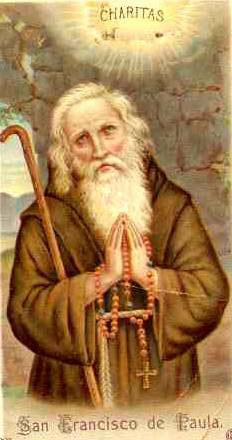 Dear readers, Catholic Online was de-platformed by Shopify for our pro-life beliefs. They shut down our Catholic Online, Catholic Online School, Prayer Candles, and Catholic Online Learning Resources essential faith tools serving over 1.4 million students and millions of families worldwide. Our founders, now in their 70's, just gave their entire life savings to protect this mission. But fewer than 2% of readers donate. If everyone gave just $5, the cost of a coffee, we could rebuild stronger and keep Catholic education free for all. Stand with us in faith. Thank you. Help Now >
Dear readers, Catholic Online was de-platformed by Shopify for our pro-life beliefs. They shut down our Catholic Online, Catholic Online School, Prayer Candles, and Catholic Online Learning Resources essential faith tools serving over 1.4 million students and millions of families worldwide. Our founders, now in their 70's, just gave their entire life savings to protect this mission. But fewer than 2% of readers donate. If everyone gave just $5, the cost of a coffee, we could rebuild stronger and keep Catholic education free for all. Stand with us in faith. Thank you. Help Now >
Pope John X
FREE Catholic Classes
Born at Tossignano, Romagna; enthroned, 914; died at Rome, 928. First a deacon, he became Archbishop of Ravenna about 905, as successor of Kailo. In a document dated 5 February, 914, he still appears as archbishop. Shortly afterwards, owing to the influence of the nobles dominant in Rome, he was made pope in succession to Lando. The real head of this aristocratical faction was the elder Theodora, wife of the Senator Theophylactus. Liutprand of Cremona ("Antapodosis," II, ed. in "Mon. Germ. Hist.: Script.," II, 297) affirms that Theodora supported John's election in order to cover more easily her illicit relations with him. This statement is, however, generally and rightly rejected as a calumny. Liutprand wrote his history some fifty years later, and constantly slandered the Romans, whom he hated. At the time of John's election Theodora was advanced in years, and is lauded by other writers (e.g. Vulgarius). John was a relative of Theodora's family, and this explains sufficiently why she secured his election. The new pope was an active and energetic ruler, and exerted himself especially to put an end to the Saracen invasions. He brought about an alliance between Prince Landulph of Beneventum, Berengarius of Friuli, King of the Lombards, and other Italian rulers, and, when Berengarius came to Rome in 915, the pope crowned him emperor. John himself led against the Saracens a large army gathered by the allied Italian princes. The Saracens had built fortresses on the river Garigliano, but in August, 916, John completely routed them near the mouth of that river.
Concerning the ecclesiastical administration of this pope we possess many particulars. He sent to Germany his trusted friend Petrus, Bishop of Orte, who held in 916 a synod at Hohenaltheim (near Noerdlingen), and entered into friendly relations with King Conrad. John also concerned himself with affairs in France, where Count Heribert of Aquitaine held King Charles a prisoner, and demanded the election of his five-year-old son, Hugh of Vermandois, as Archbishop of Reims. John unhappily confirmed this choice after Heribert had promised the king's release. He further sought to bring the Slavs of Dalmatia into closer relations with Rome, and strove to induce the Archbishop of Spalato to adopt Latin as the liturgical language. His efforts to promote a more intimate union between the Bulgarians and Rome were frustrated by the opposition of the Patriarch of Constantinople. Another opportunity offered, when later the Byzantine patriarch, Nicolaus Mysticus, sought the aid of the pope. The patriarch had been deposed by a synod, because he would not recognize the fourth marriage of Emperor Leo VI. Before his death, however, Leo restored Nicolaus to his office, and the new emperor (Alexander) was also on his side. But many bishops were yet opposed to the patriarch on account of his deposition by the earlier synod. Under these circumstances Nicolaus wished to have the decree of deposition declared invalid by another council, and towards this end desired the assistance of John. But John remained true to the discipline of the Western Church, which permitted as valid even a fourth marriage. Meanwhile, he was active in the political life of Italy. After the murder of King Berengarius in 924 the pope supported Hugh of Burgundy, and, when the latter landed in Pisa, John sent his legate to meet him and form an alliance. The dominant Roman faction disliked these measures. Foremost among them was the elder Marozia, daughter of Theophylactus and Theodora. After the death of her first husband Alberic, Marozia had married (926) Guido, the powerful Margrave of Tuscany. The alliance of John and Hugh of Burgundy seemed to endanger her power in Rome, and so with her husband's aid she decided to remove John. Petrus, Prefect of Rome and brother of the pope, was murdered in June, 928. The pontiff himself was seized and cast into prison, where he died shortly after. According to a rumour recorded by Liutprand, and thus little to be relied on, he was smothered in his bed. Flodoard of Reims asserts that he died of anxiety. He was probably buried in the Lateran, for the restoration of which he had been particularly zealous.
Join the Movement
When you sign up below, you don't just join an email list - you're joining an entire movement for Free world class Catholic education.

-

- Stations of the Cross
- Easter / Lent
- 5 Lenten Prayers
- Ash Wednesday
- Living Lent
- 7 Morning Prayers
- Mysteries of the Rosary
- Litany of the Bl. Virgin Mary
- Popular Saints
- Popular Prayers
- Female Saints
- Saint Feast Days by Month
- Pray the Rosary
Pope Francis’ April Prayer Intention: Using Technology to Strengthen Human Connections
Finding Peace Through Prayer in a World of Worry
Trump Administration Withholds Federal Grants from Planned Parenthood Over DEI and Civil Rights Concerns
Daily Catholic
 Daily Readings for Wednesday, April 02, 2025
Daily Readings for Wednesday, April 02, 2025 St. Francis of Paola: Saint of the Day for Wednesday, April 02, 2025
St. Francis of Paola: Saint of the Day for Wednesday, April 02, 2025 Prayer for God's Help in Daily Actions: Prayer of the Day for Friday, March 14, 2025
Prayer for God's Help in Daily Actions: Prayer of the Day for Friday, March 14, 2025 Daily Readings for Tuesday, April 01, 2025
Daily Readings for Tuesday, April 01, 2025 St. Hugh of Grenoble: Saint of the Day for Tuesday, April 01, 2025
St. Hugh of Grenoble: Saint of the Day for Tuesday, April 01, 2025- To Perceive Animals as God's Gifts: Prayer of the Day for Thursday, March 13, 2025
![]()
Copyright 2025 Catholic Online. All materials contained on this site, whether written, audible or visual are the exclusive property of Catholic Online and are protected under U.S. and International copyright laws, © Copyright 2025 Catholic Online. Any unauthorized use, without prior written consent of Catholic Online is strictly forbidden and prohibited.
Catholic Online is a Project of Your Catholic Voice Foundation, a Not-for-Profit Corporation. Your Catholic Voice Foundation has been granted a recognition of tax exemption under Section 501(c)(3) of the Internal Revenue Code. Federal Tax Identification Number: 81-0596847. Your gift is tax-deductible as allowed by law.



 Daily Readings for Wednesday, April 02, 2025
Daily Readings for Wednesday, April 02, 2025 St. Francis of Paola: Saint of the Day for Wednesday, April 02, 2025
St. Francis of Paola: Saint of the Day for Wednesday, April 02, 2025 Prayer for God's Help in Daily Actions: Prayer of the Day for Friday, March 14, 2025
Prayer for God's Help in Daily Actions: Prayer of the Day for Friday, March 14, 2025 St. Hugh of Grenoble: Saint of the Day for Tuesday, April 01, 2025
St. Hugh of Grenoble: Saint of the Day for Tuesday, April 01, 2025

